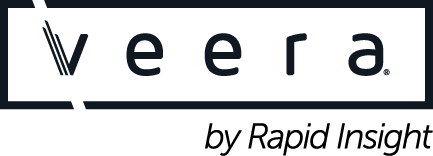Of the 635 students who started Bellarmine University in fall 2016, only 72 percent were still in school a year later. The freshman class that began in fall 2017, however, retained 79 percent of its students when sophomore year began at the Louisville, Kentucky, school.
This improvement came after using a predictive model based on admissions information to identify ways to better support students transitioning from high school. The Veera analytics platform by Rapid Insight automatically blends and mines data, identifies variables with predictive qualities, and builds reliable models.
Changing the narrative
“It’s not just about statistics,” says Drew Thiemann, director of the Office of Institutional Research & Effectiveness at Bellarmine University. “The data simply give us a starting point from which we can begin to understand students at a deeper, more humanizing level. There used to be many narratives about what it means to be a student at risk. In 2019, understanding student complexity and intersectionality means you can’t start from a risk-based perspective. We changed the narrative. There’s no cookie-cutter, one-size-fits-all intervention because there’s no cookie-cutter, one-size-fits-all student.”
Insights from the Veera platform have helped the Student Success Center customize new communications and target interventions, as well as modify existing programs. For example, all first-year students now have a professional advisor who promotes student-specific resources such as writing and tutoring centers.
Meeting students where they are
“We want every student to have a chance to flourish,” Thiemann says. “Our faculty and staff are committed to helping students stay connected to the school community in a way that helps them overcome any challenges or burdens—such as needing accommodations, experiencing test anxiety, having financial difficulties, or even raising a child while they are going to college.”
The predictive model built by the Veera platform initially used information such as high school GPA, standardized test scores and demographics. Now, student behavior and engagement—from card swipes at the recreation center to results from a noncognitive skills inventory—are also being incorporated to understand their impact on student retention, Thiemann says.
Reversing a trend
All class levels have improved retention since the university began using Veera. The 2016 cohort, however, is of particular note, according to Thiemann.
“That class has recovered,” he says. “The students have taken advantage of the systems and programming we have, and their class has turned the corner in a way that no other junior class has. So even though on paper it looks like they’ve had low retention, the fact that we were able to reverse the trend has been a success. We’re  creating a culture of effectiveness here at Bellarmine, and our students are benefiting from it.”
creating a culture of effectiveness here at Bellarmine, and our students are benefiting from it.”
For more information, please visit rapidinsight.com





